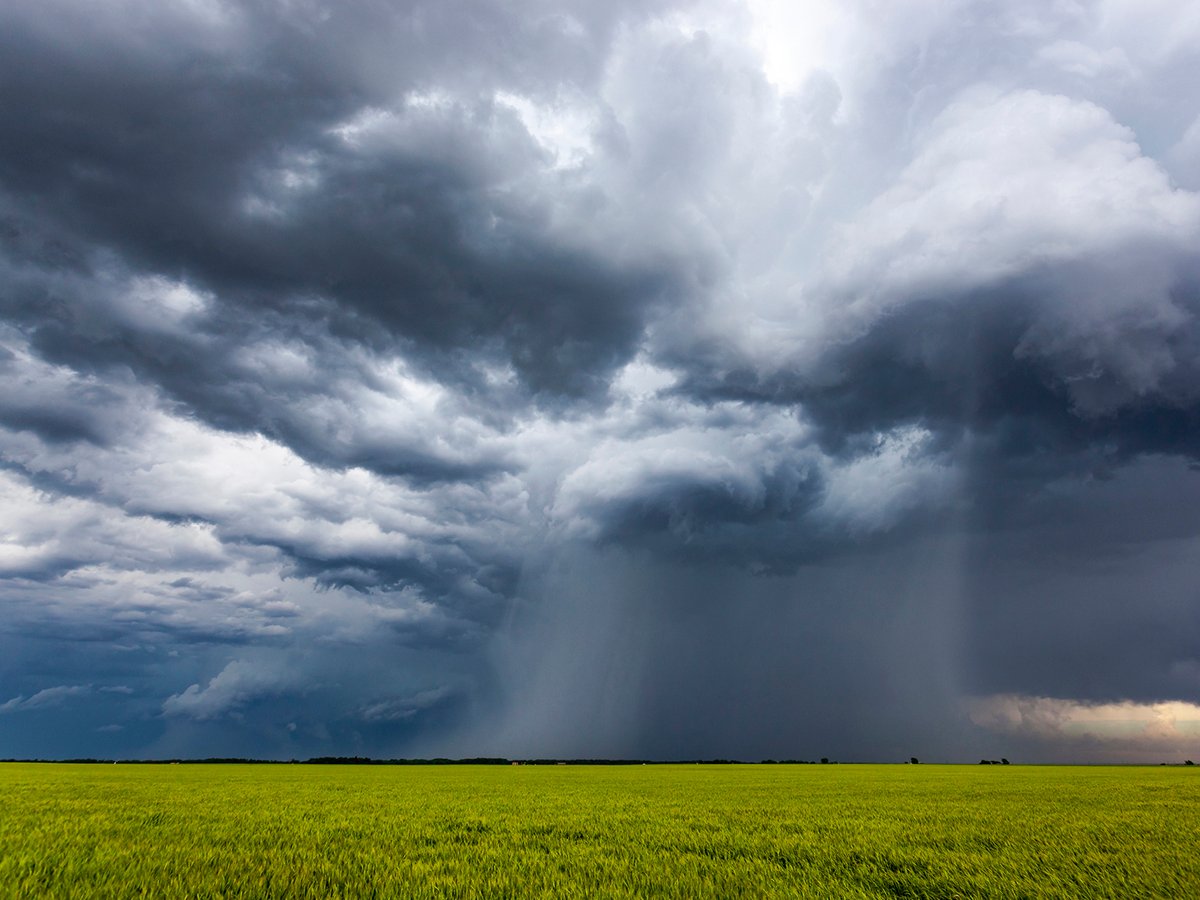Western Producer reporter Barbara Duckworth recently travelled to Australia to gauge the state of agriculture there.
BENDIGO, Australia – John Hutt scuffs the concrete floor with his boot as he tries to describe how dry Australian farmland has become in the last five years.
Recent showers across most of the southern regions of the arid continent were welcome but the moisture was not enough to make a real difference by mid-May, when many farmers seed winter crops.
He predicts a “green drought,” where grass and other crops grow a couple centimetres and then stop.
Read Also

Extreme rain increases as planet warms
In this issue, we are going to wrap up our look at extreme rainfall by examining the different weather patterns that tend to be associated with these rainfall events.
“It’ll look like a carpet but there won’t be any feed value in it,” he said, pointing to the green, artificial turf spread around his polled Herefords’ stall at the Bendigo National Beef Show May 19.
He hopes to find enough water and feed to carry on for another season on his holdings near Cowra in the state of New South Wales. Farmers in his area were seeding oats after 50 millimetres of rain fell in mid-April. If the oats sprout and grow, there could be enough to keep livestock going.
“If you’ve got water, you can keep cattle alive,” he said.
John Hodgson’s drought vigil includes watching a stream passing through his farm north of Canberra.
“I can tell how well the country is doing by how high the water is across my ford. If the water stays high for more than a day, then the country is doing all right because we are getting a lot of seepages coming out of the hills because they are saturated,” he said.
“We haven’t seen that for many years now.”
Showers eased the situation but he needs regular rain for the rest of the season to rebuild starved pastures and refill dry pool beds.
Each drought has been worse than the last so the cumulative effects have worn out the land, Hodgson said.
“We will recover back to a much reduced holding level. We will have to start rebuilding those paddocks and getting that pasture back over the bare spots and getting rid of the weeds that have crept up.”
Eight years ago when he was building fences, water seeped in when he sunk a four-foot-deep hole.
“The year before last we stopped because we were breaking the auger too often. We could dig four feet down and talcum powder came up.”
He is watching 90-year-old trees wither and die and estimates 20 percent of established trees in his region could be lost.
“We are at the end of five really, really hard years. The first year we all had drought strategies we put in action. The second year we went to our contingency plans and now the water has gone dry and we are going to lose a lot of farmers out of this,” he said.
“You have to make a hard judgment about what is of value to the family.”
Some of Hodgson’s neighbours haul water to the stock and others are buying forage, which is in short supply. Talk about importing feed is ongoing.
The federal and state governments have spent $1.3 billion Cdn on farm support since 2001.
Income support for basic needs totaled $685 million and another program of $672 million was
offered to help pay interest on farm loans, said Jenny Cupit of Australia’s federal agriculture department.
Farmers are subjected to a means test because the money is not a price support or an entitlement.
“They must draw on their own resources,” she said.
About 20 percent of farmers have qualified for help. So far Australian taxpayers have not balked at distributing $1.3 billion to the farming community because they still appreciate agriculture’s contribution to the economy, said David Williamson of the ag department.
“There is a widely held view that some sort of assistance is appropriate,” he said.
“None of these measures are seen as income support. They are finite.”
Other programs have offered drought education and improved business and management skills, which may encourage some farmers to exit the industry.
“They recognize which are long-term viable farmers or should they think about doing something else,” Cupit said.
A five-year-old farm deposit program allows farmers to set aside up to $440,000 in a good year and withdraw in poor ones. Taxes are due when the money is taken out. The fund swelled to $4.4 billion and now farmers are drawing on the money to save themselves from bankruptcy, said Scott Mitchell of the National Farmers Federation.
About $440 million was withdrawn in the last quarter of 2006.















